Charmed by the Karo’s body art painting, we head now to their cousins – the Hamer. The latter represents one of the biggest tribes in Lower Omo Valley with close to 50,000 individuals. The Hamer are essentially pastoralists, herding cattle sheep and goat while practising also some subsistence agriculture.
‘Hamer tribe is my favorite in the Lower Omo Valley’, states my guide. ‘Their lifestyle and their philosophy are to well tuned that it makes them very happy and agreeable people to meet.’ I look forward to interacting with them.
Market day and body art
My first direct encounter with the Hamer takes place in a little town during the weekly market. This is a great moment indeed, full of colours and smells, rich of vibrations and emotions.
I am so impacted first by the communal scenes that I tour the Hamer market several times – just looking, observing and admiring. I feel ready for photography only much later. I move around and shoot discretely, eager to capture genuine situations and raw moments.
My interest in the Hamer market directs much less at the goods exchanged than at the people interacting in the public space.
Hamer trade primarily food and other essential items for their pastoralist lifestyle. Their weekly market provides also golden opportunities for meeting, socialising, arguing, showing off, chitchatting and gossiping.

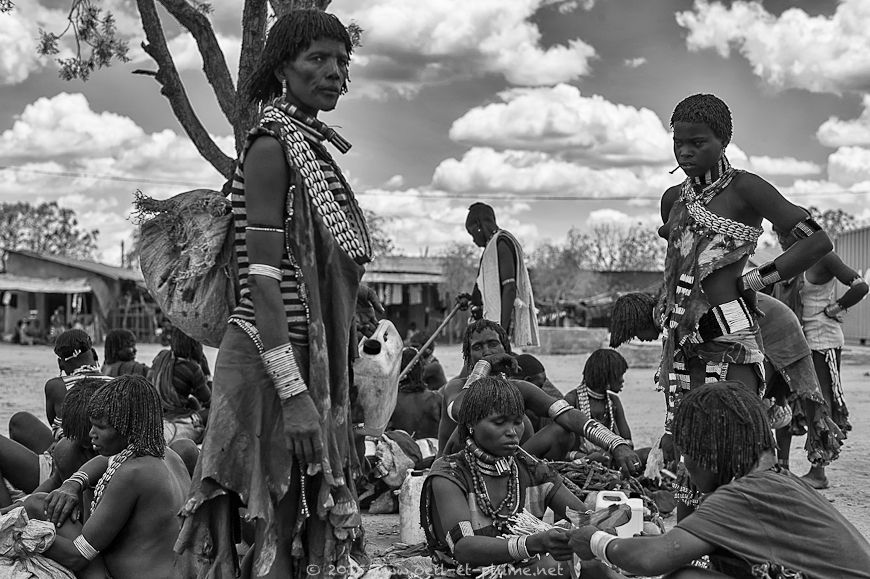
Hamer females are particularly beautiful and keen to beautify themselves. Adult women have their adorned and plaited ochre-coloured hair hanging down in a heavy fringe. In turn, female teenagers wear a multicoloured bead headband over their braids. Women wear leather skirts made of three goatskins, decorated with cowry shells, beads and other colourful adornments.
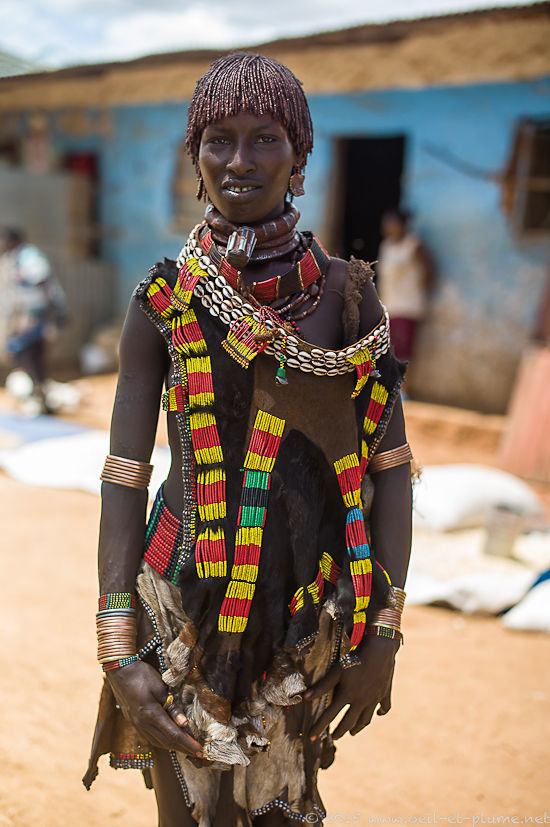
Necklaces and bracelets are plentiful. A dozen or more copper bracelets circle tightly the arms and waists. A large cowry belt is set from one shoulder across the body as large necklace. A calabash often hangs on the shoulder, serving as bag or bottle. Despite its rawness, the female attire looks very elegant and even fashionable.


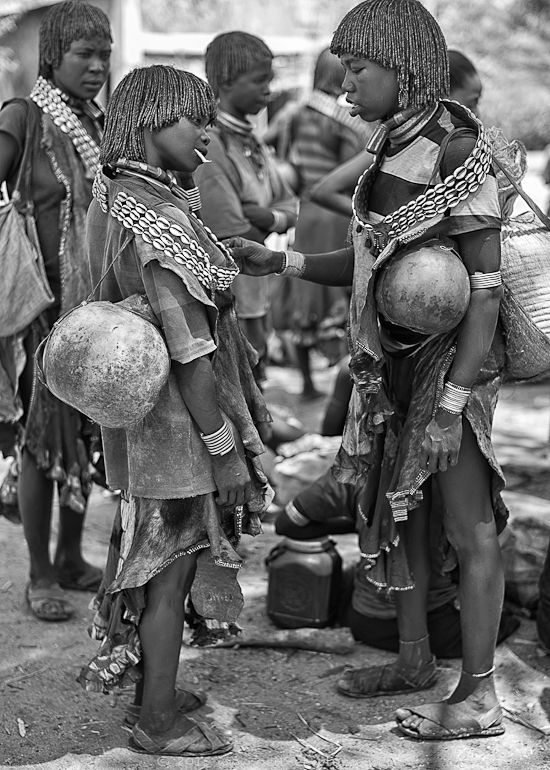
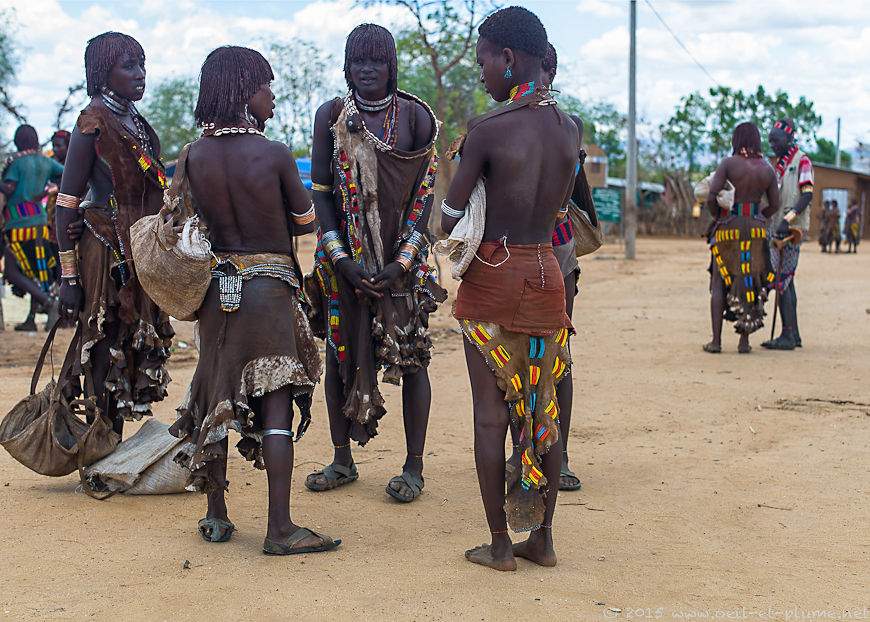
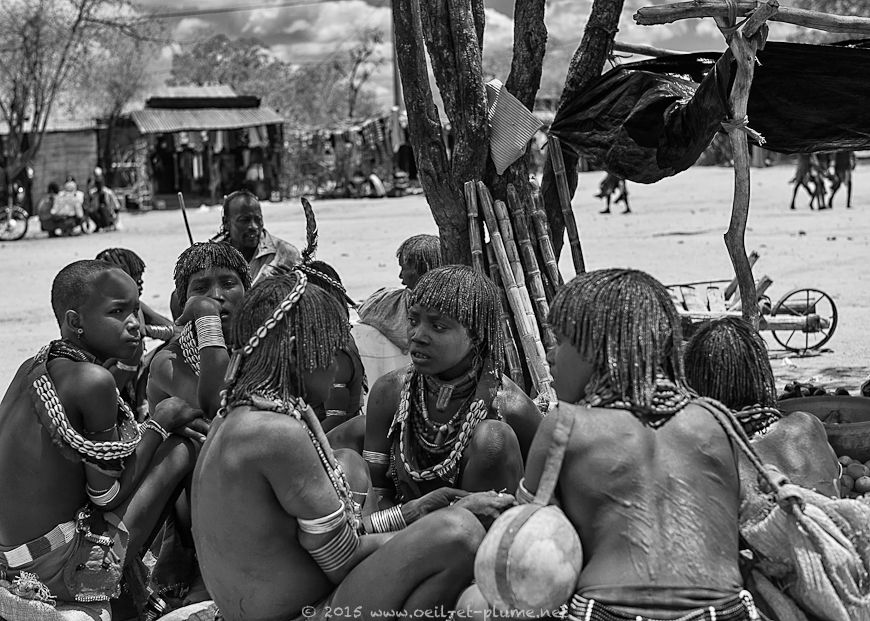
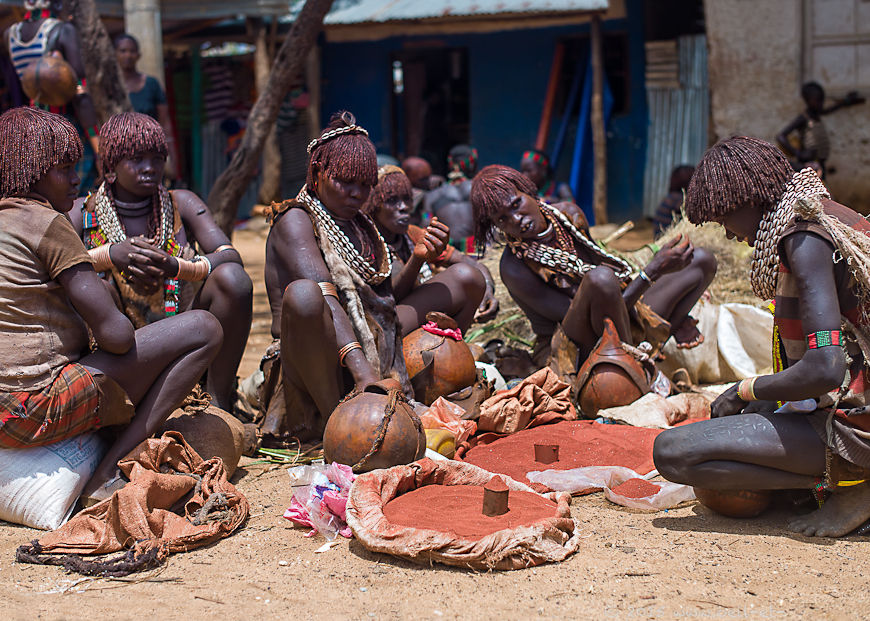
Hamer women use red clay mixed with butter to dye and dress their hair. As the clay is extracted from a few places in Lower Omo Valley, the substance is traded in all local markets.
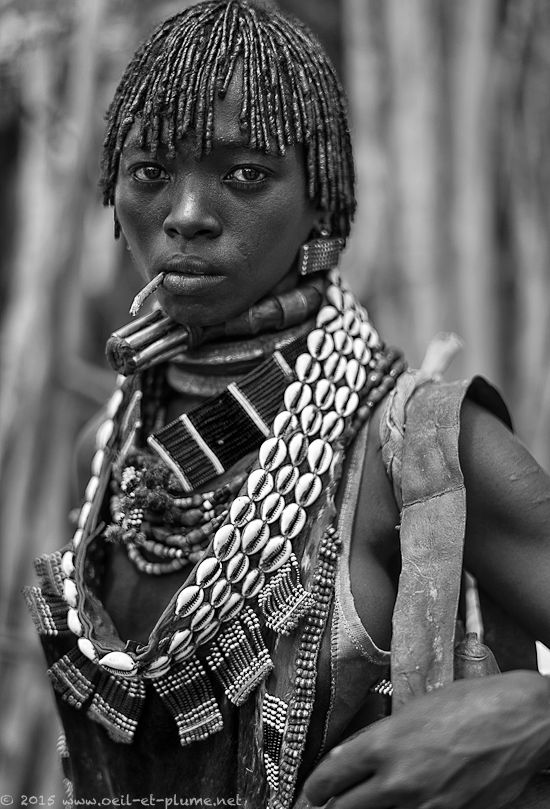
Women’ faces often bear the spurs of the harsh open-air life that they carry on. Those two young females obviously don’t. The first one bears the necklace typical of a first spouse, while the other is a second wife.

Hamer males can be polygamist provided that they can sustain the needs of a larger family. The first wife is selected by the family amongst Harmer tribe to avoid consanguinity. The husband can marry additional wives, drawing on other tribes as well.

Hamer men are more discrete. Some of them exhibit hair ornaments to indicate the kill of an enemy or an animal. Like the Karo, they paint themselves with white chalk for ceremonial purposes.
Communal life
Hamer tribesmen are too fascinating to be approached in a weekly market only. Luckily, we are to spend the night in a Hamer village. We will not camp but overnight in one of their huts made up of mud, wood and straw.
We reach our destination in the late afternoon. The rain starts pouring; we rush into our hut to prepare for the night. Scores of Hamer children join us inside until dinnertime. Chats and songs keep them busy.
I feel bad wearing my rain jacket, as most of them have no additional piece of clothing to sustain the freshness of the air. As the rain has stopped, I stroll throughout the village.
A little girl approaches me, asking me for something that I don’t understand. Frustrated by my lack of reaction, she searches systematically and thoroughly all my pockets, with no avail. All of a sudden, she looses interest and returns home. Back in our hut, I tell the story to my guide: ‘she was looking for soap’. Sorry girl!
On the next day, a soft early morning light starts illuminating our hut. I jump out to shoot pictures of the villagers. The next hour or so is a great photographic moment.

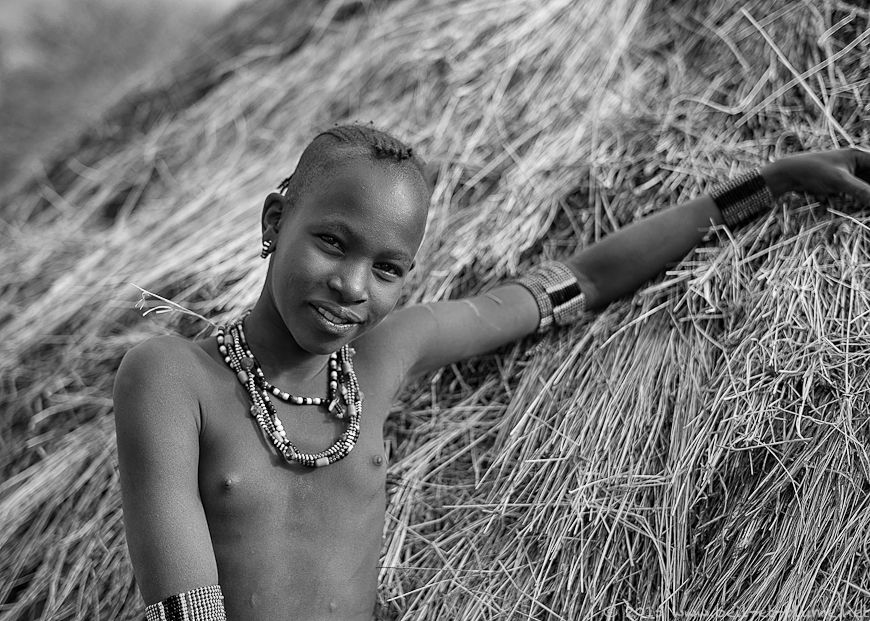

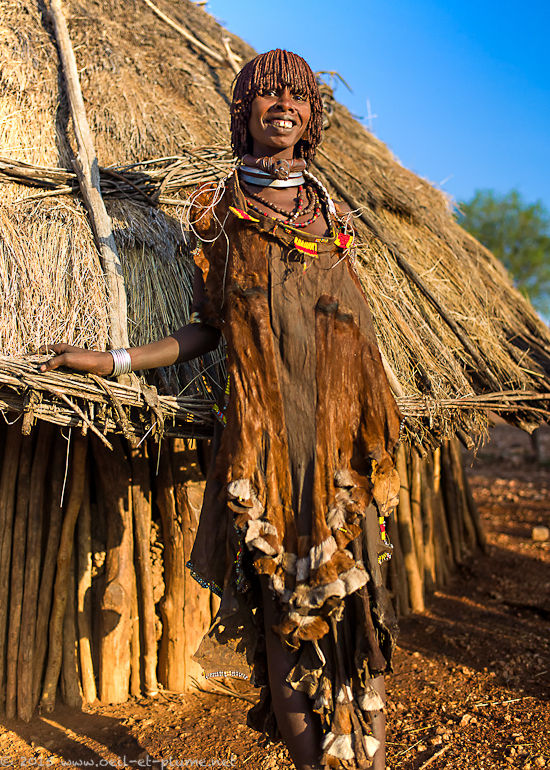
The sound of a horn resonates across the village. A male elder died overnight. His leg tendons will be broken to allow setting his body in foetal position for burial. Hamer animist tradition depicts human birth and death as key steps of a repeated natural cycle. The burial of the dead in foetal posture thus prepares for a new birth.
Life is stronger than death. Villagers start their day: after breakfast they set off for their rural activity.
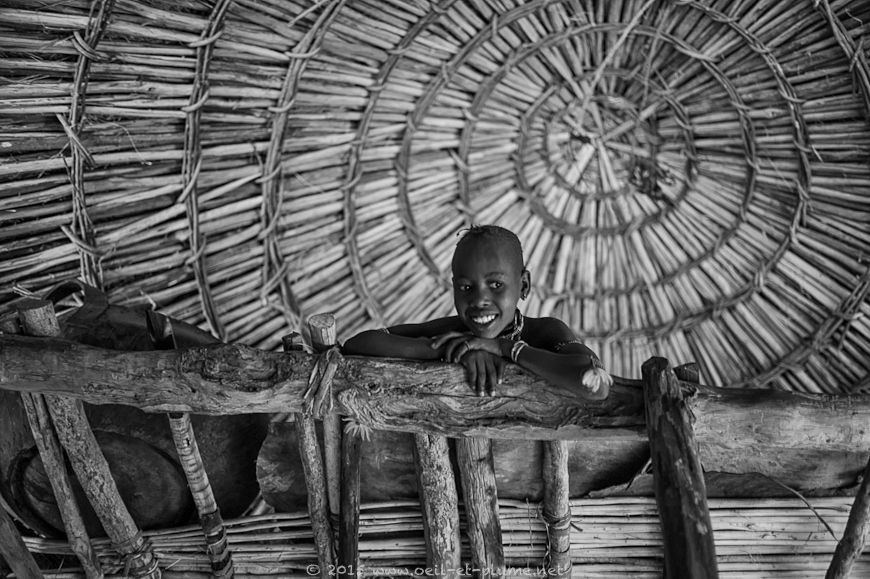
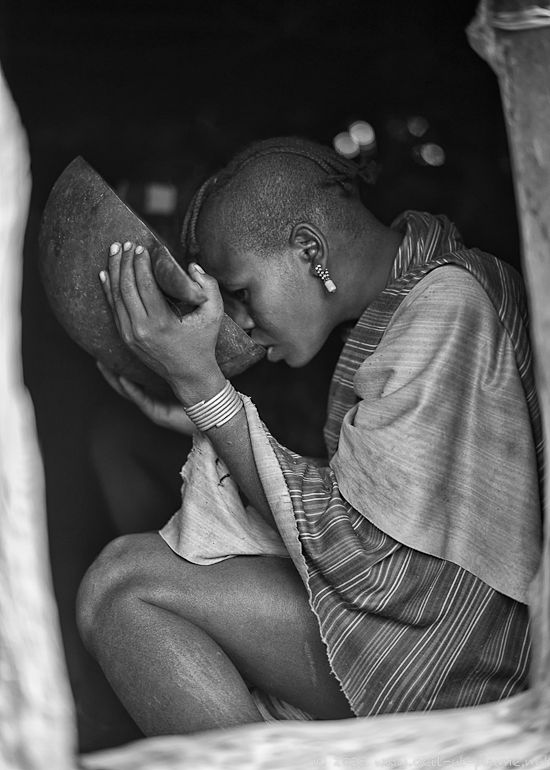
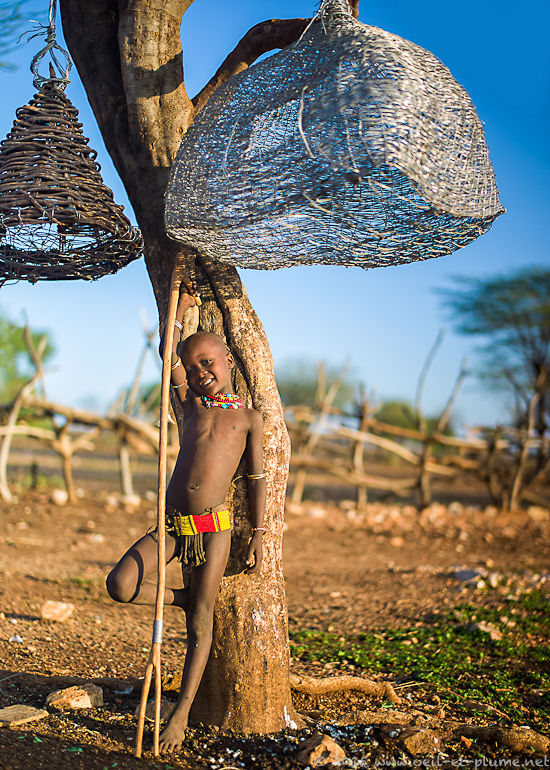
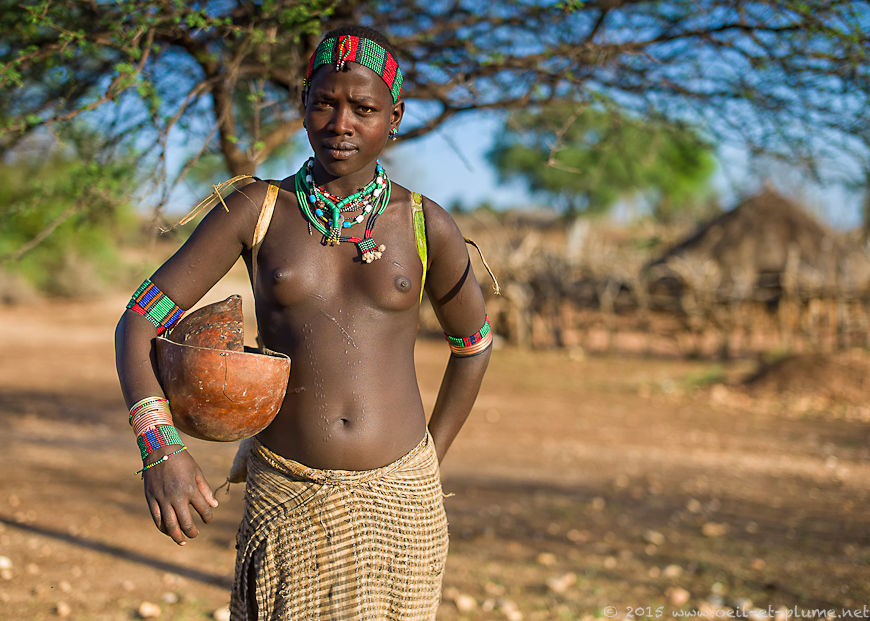
Cattle, goats and sheep are vital to the Hamer’s pastoralist livelihood, producing milk, blood, meat and hide. Cattle are highly valued and used as currency for trading and bartering.
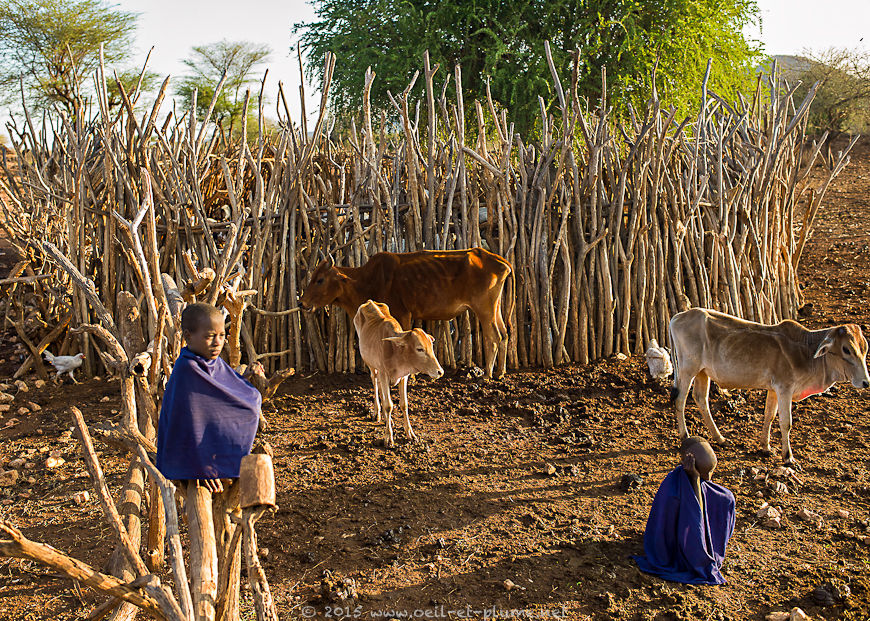
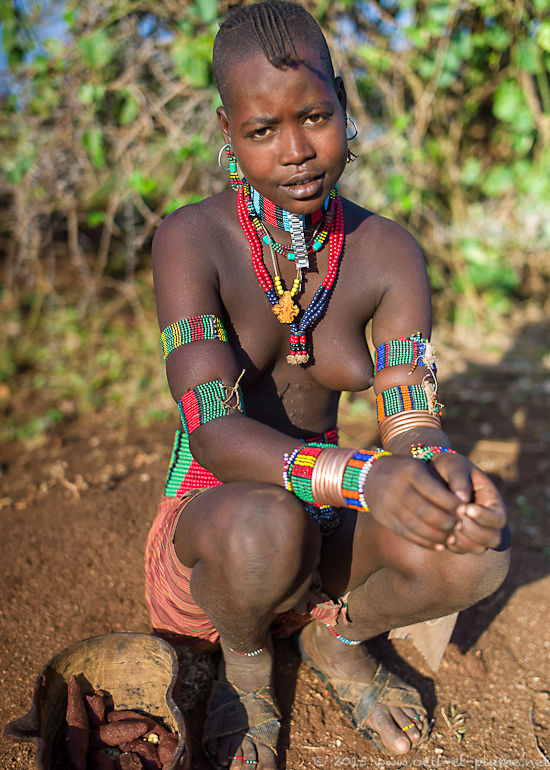
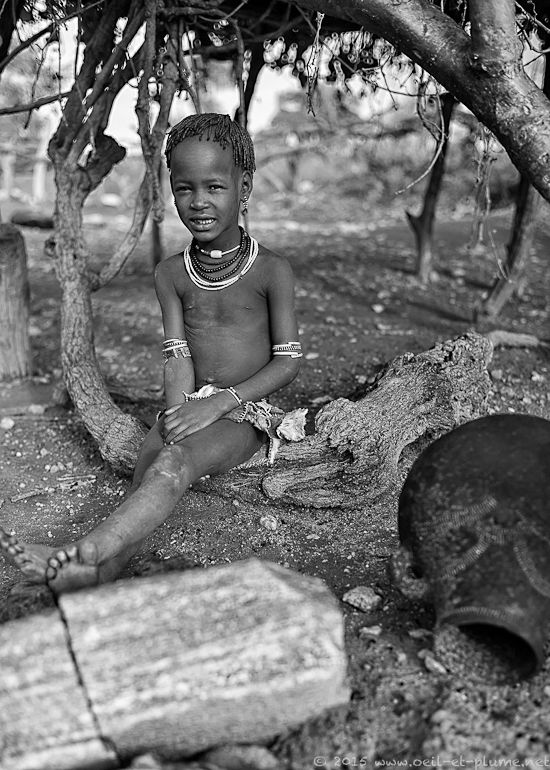
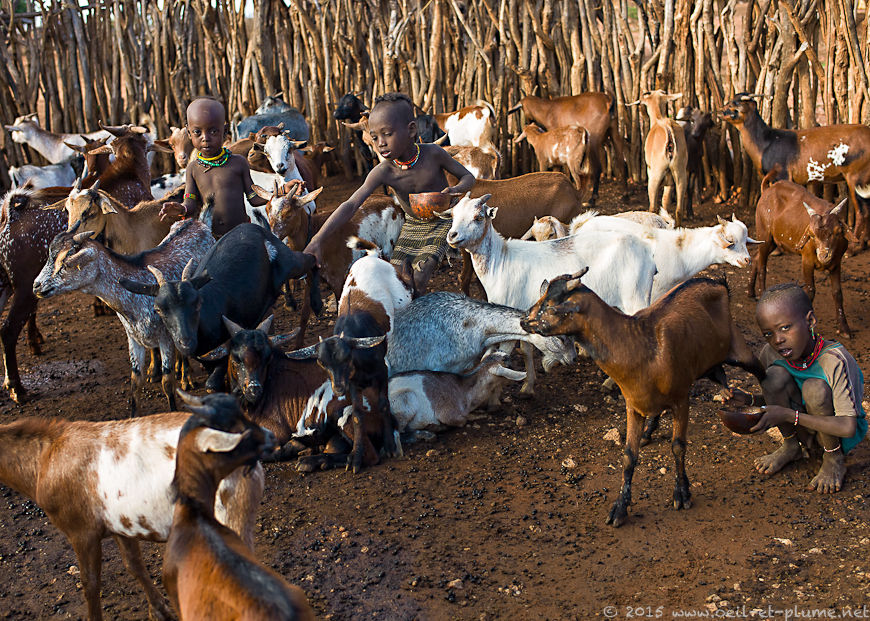
Cattle are also essential to Hamer tribal rites such as communicating with ancestors as well as to social contracts. They constitute a key element of engagements and wedding ceremonies.
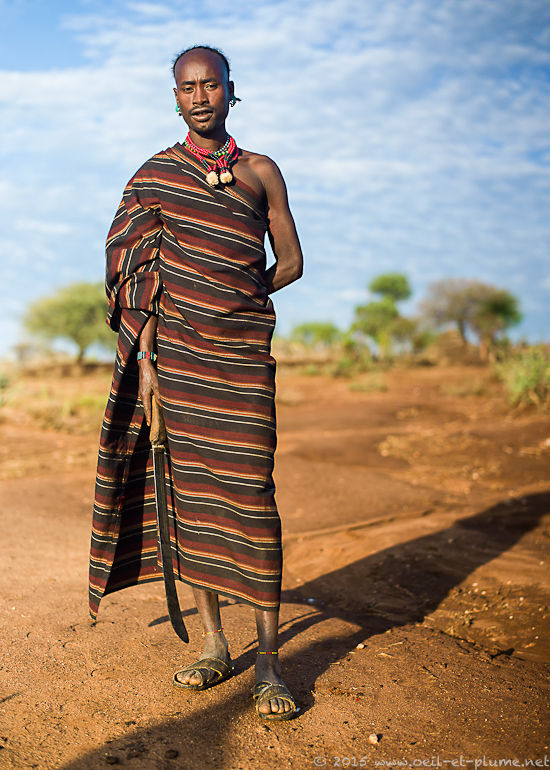

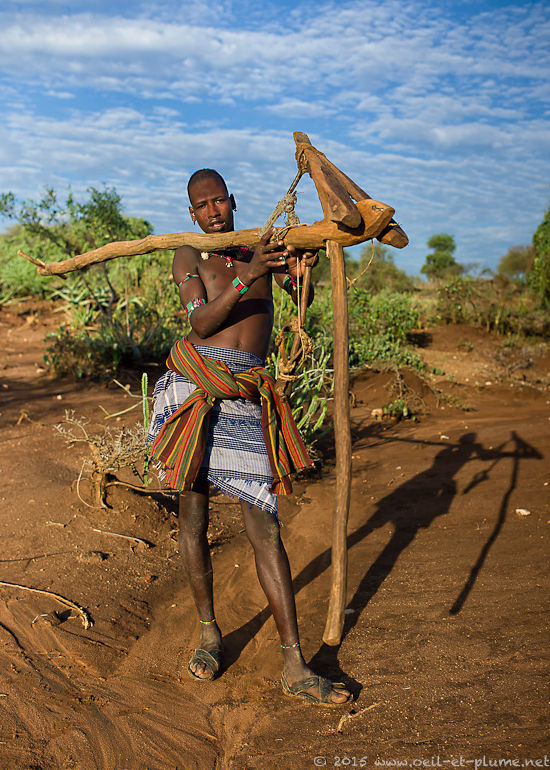
Don’t jump over my next post, devoted to Hamer bull jumping ceremony.
Cheers,